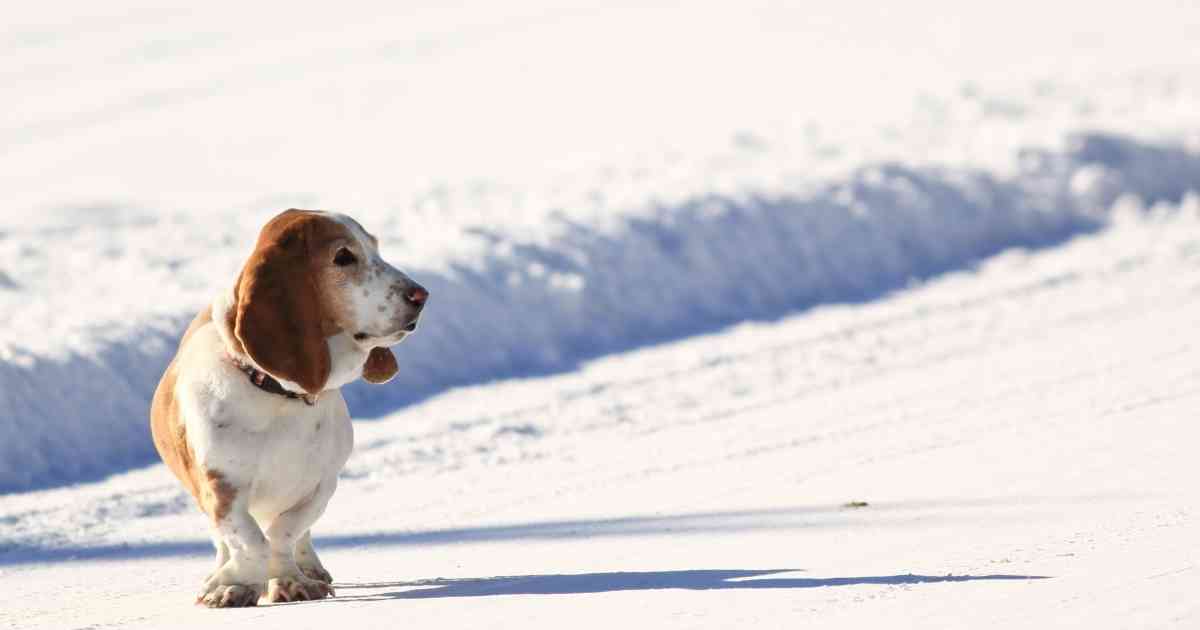If only our dogs could talk, the stories they would tell would entertain us for hours. Not to mention, it would be a lot easier to be a dog owner! Since humans rely significantly on both verbal and non-verbal communication, we can sometimes be at a disadvantage when dealing with our dogs.
Dogs primarily communicate through non-verbal communication, which is using subtle gestures and body language to convey complex thoughts and feelings. Unfortunately, dogs can’t just tell us they aren’t feeling well – they have to make us understand through their actions, not their woofs.
Understanding how to tell if your dog is cold isn’t difficult once you learn how your dog communicates its feelings. By learning to observe some behavioral changes in your furry friend, you can understand a lot about your dog’s state of mind.
Here’s how your dog might be trying to tell you something is amiss, and that he’s getting a little too cold for comfort.
How To Know If My Dog Is Cold – Signs a Dog Isn’t Quite Well

Dogs are remarkably expressive companions, and can communicate a range of emotions. Their “conversational” abilities go well beyond standard tail-wags. The first step to understanding what a dog is trying to tell you is by looking at your dog’s entire body. For example, a raised tail could indicate he is happily waiting to play, almost becoming adorably impatient as he waits for you to throw his favorite toy.
However, a raised tail with a stiff and rigid body, along with perked ears, tells you that your dog is on alert, and not happy overall with the situation. Dogs’ nonverbal communication is usually broken down into 5 categories, and if that weren’t complicated enough, dogs can exhibit behaviors from multiple categories at the same time!
Learning to decipher this body language is essential to getting inside your dog’s head and understanding what he is trying to tell you. It takes some time and effort, but it’s worth it to be the best dog owner you can be.
Beyond telling us they’re anxious or stressed, how exactly do dogs communicate they’re too cold, or even, in extreme cases, show signs of hypothermia?
General Signs of Cold Temperatures

Dogs are remarkably similar to humans when it comes to showing initial signs of being too cold and uncomfortable. Don’t assume that your dog’s fur coat alone will be enough to keep him outside during extremely cold temperatures. During the winter months, your dog will likely need to go beyond his natural furry protection if he wants to stay outside for extended periods of time.
Shivering
The most obvious way to tell if your dog is too cold is to see if he is shaking or shivering. Just like humans, dogs shiver in an attempt to warm themselves up.
The rapid muscular movement when a dog is cold is evolutionary, and is often the first sign that his normal body temperature is out of whack. In any kind of cold weather, if your dog is shivering, you should take note that they’re telling you, “Hey, my fur coat isn’t enough for this weather.”
Temperature
The next step up from shivering won’t be communicated through body language – you’ll need to physically check your dog to discover this. Gently place your hands on your dog’s paws and ears. If they feel cold to the touch, (specifically his ears, as his paws will likely be cold from the ground,) this is the next sign that your dog is getting too cold for comfort.
A dog’s natural body temperature is warmer than humans’, running from 101 to 102.5 degrees Fahrenheit. Once your dog’s body temperature drops below this equilibrium for too long, its body will go into a type of “survival mode.”
When a dog’s ears and paws have become cold to the touch, it’s signaling that your dog is trying to warm himself up. Humans do this as well. If you’ve ever been really cold, you probably notice that your extremities, like your hands and feet, likely get colder than the rest of your body.
This is because your body is pooling blood around your vital organs in an attempt to keep them warm. From an evolutionary standpoint, your body is just trying to survive. It will gladly sacrifice a hand or foot if it means that you’ll be able to survive the cold.
When your dog’s ears and paws get cold, his little fuzzy body is pooling blood around his core torso to keep all the most vital organs as warm as possible. When your dog gets to this stage of being cold, move him to a warmer environment as fast as possible. Prolonged exposure to cold temperatures can cause serious health issues.
Serious Signs – Slowing Down, Limping, Curling Into a Ball
After your pup’s ears and paws go cold, you could begin to notice any one (or combination of) behaviors, including slow and lethargic movements, limping, or curling into a ball. At this point, your dog is going into pure survival mode.
Generally, you’ll notice your dog start to limp as its paws get more and more uncomfortable from the cold. In much colder temperatures, the pads on your dog’s paws can start to crack and bleed, causing extreme discomfort and opening your dog up to the possibility of bacterial infections.
On top of limping, a dog’s movements will generally slow, as his core temperature drops even further. Your dog is moving slower in a semi-desperate attempt to preserve energy and stay warm.
As the ambient temperature continues to drop, your dog will progress to the last stage of expression. If you see your dog curling up into a ball and refusing to walk, you know you need to take immediate action to save him. Curling into a ball, usually with the other members of their pack huddled nearby, was the last ditch effort for the first outdoor dogs to stay warm and beat cold temperatures.
If your dog does this while out on a walk, he is purely trying to survive the cold. His core temperature has likely fallen to a dangerously low level. If your dog gets to this point, some health issues may arise.
Possible Health Complications

Like people, the most serious risk from prolonged exposure to cold temperatures is hypothermia. Hypothermia occurs when your core temperature drops too low for too long a period of time. For dogs, hypothermia can begin to occur when their core temperature drops into the 90 to 99 degrees Fahrenheit range.
Hypothermia is characterized by extreme shivering, slowness, and lethargy, and can be extremely dangerous – even outright fatal. Your dog will need immediate veterinary assistance if you suspect him to have hypothermia.
Frostbite is another common and dangerous health condition that can arise from exposure to cold weather. As mentioned earlier, when your core temperature begins dropping, your body will begin redirecting blood flow to prioritize warmth and survival of vital organs.
Unfortunately, this leaves outer extremities (in your dog’s case, his paws, ears, and tail) at risk for frostbite, and potentially even gangrene. If you notice your dog’s paws or other extremities have turned bright red and are cracked or bleeding, this could be an early indication of frostbite.
In addition, if you notice a blackish coloration in a frostbitten area, your dog will require immediate attention from a vet. He could be at risk for gangrene, or limb-loss due to decreased blood circulation.
Not all health issues arising from cold temperature will be this serious – dogs are at just as much risk of common illnesses as you are. If your dog spends too much time outside in the cold, he might come back with the common cold.
Pay attention to his mannerisms, and especially his nose! If your dog’s nose is “runny,” it could be an indicator that he’s feeling under the weather.
Keeping Your Pup Happy and Warm
Understanding how to know if your dog is cold is thankfully quite easy, once you understand the nonverbal ways that your dog communicates. If you’re walking your dog in colder weather, be sure to pay attention to these nonverbal cues that indicate your dog is getting too cold.
While in most cases, your dog won’t suffer much more than a common cold, extremely cold weather can be very dangerous. Once you see your dog exhibiting some of the more concerning signs of being too cold, be sure you get him to a vet right away, so he can stay happy and healthy for many walks to come!






